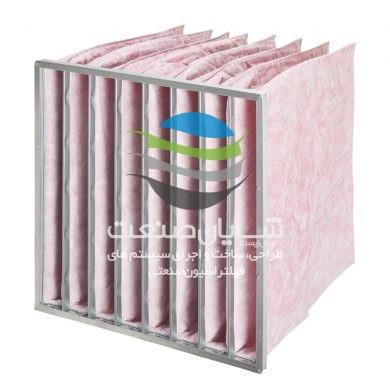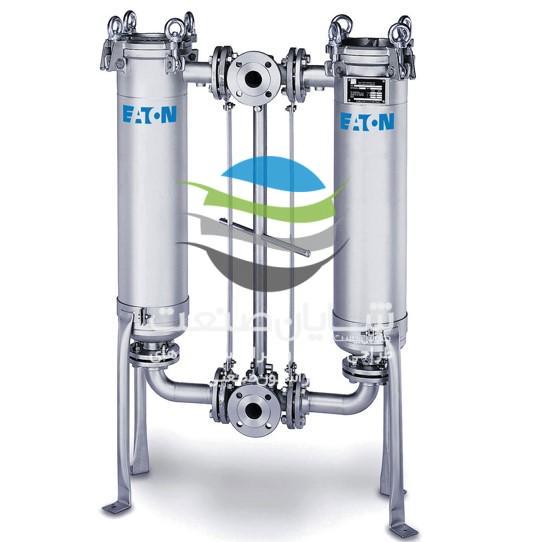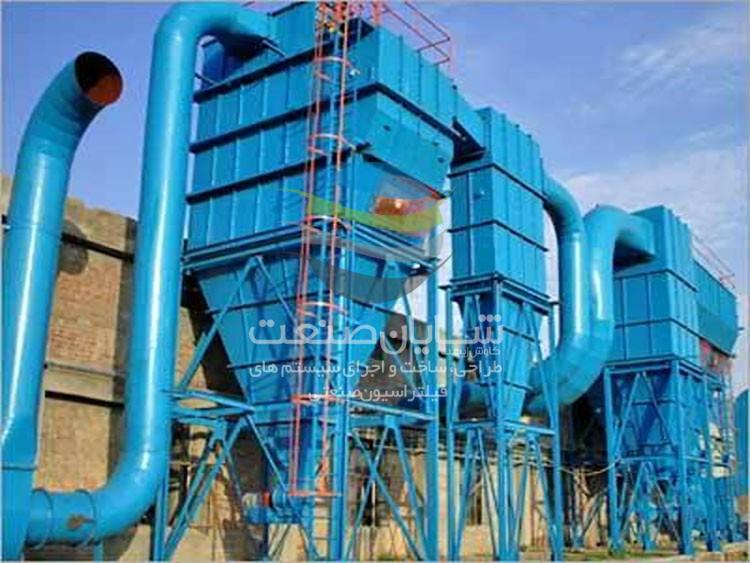Introduce the dust filter bag and check its performance
The dust filter bag is one of the most important components of the filter bag used on the boiler site. Bag filter as a bag filter , dust filter or fabric filter It is also known as a means of controlling air pollution and collecting dust. In other words, the filter treats bags of particles or polluted gas released from various commercial processes from within the environment of the facility. In fact, a dust filter bag is placed inside a filter housing to control the amount of sulfur dioxide and other harmful gases. During boiler operation, the polluted gases leaving it enter the dust filter bag and come into contact with the outer surface of the air filter bags (such as pipes). Because the centrifugal fans are located at the bottom of the filter chamber, they create a continuous suction effect. Therefore, polluted air is directed into the dust filter bag.
Then, larger dust particles are collected on the surface of the filter and clean air is discharged through the outlet of the filter bag. This completes the dust collection operation in the air with a dust filter bag. In the late 1970s, after the invention of fabrics with high temperature tolerance capabilities, the dust filter bag was widely used. It should be noted that these fabrics used for bag filters were able to withstand temperatures above 350 degrees Fahrenheit (177 degrees Celsius). One of the most important features of a dust filter bag is that it has a 99% or even better efficiency for collecting various particles, even very small particles. Unlike electrostatic precipitators, whose efficiency varies considerably depending on the process and the electrical condition, the dust filter bag has the highest possible efficiency under different conditions.

Dust filter bag
How to clean the dust filter bag
The dust filter bag is divided into two main types according to the cleaning method:
- Intermittent cleaning
- Continuous cleaning
As you know, the alternate baghouse consists of a number of different compartments or sections. In order to clean the dust filter bag, each chamber is closed by the entry of polluted air and returns to the production line after cleaning. In other words, in the offline mode, while each of the chambers is removed from the production line separately, the flow of polluted gas is diverted towards them. This prevents unnecessary shutdown of the production process during intermittent dust filter bag cleaning cycles. On a continuous basis, however, the compartments of the cleaned air filter bag are always being filtered. In other words, in the bag cleaning cycle, the explosion of compressed air momentarily interrupts the dust collection process. This method is also known as jet pulse cleaning. Pulse jet cleaning does not require an offline chamber.
In addition, the filter bags used are classified into three common types of pulse jet filter bags, reverse flow and shaker according to the method of cleaning the dust filter bag.
Important Benefits of Bag Filter
- Ability to perform a large level of filtration
- How to make a unique and open the dust filter bag
- Very high dust holding capacity through the use of high quality filtration materials
- Long life dust filter bag
- Low energy consumption
- No corrosion
- Simple waste processing

Continuous flow filter bag
Division of filter bag types in how to clean the dust filter bag
In a mechanical shaker, the tube filter bag is closed on a cell plate at the end of the chamber and hung by horizontal beams at the top of the device. In this type of filter bag, the contaminated gas first enters the lower part of the chamber and after passing through the filters, dust collects on the inner surface of the dust filter bag. In order to clean the mechanical bag-shaker, the horizontal bar at the top of the chamber from which the dust filter bag hangs is shaken. Thus, the vibration generated by the motor shaft and the cam creates waves in the dust filter bag and dust is removed. The range of shaker dust collectors varies from small manual size to large chamber units. It should be noted that these devices can operate intermittently or continuously. In the bag house shaker, there should be no positive pressure inside the dust filter bag during the vibration process. In fact, a minimum pressure of 5 Pascals (0.00073 psi) can disrupt the cleaning cycle. Since the air to fabric ratio in this model of dust collectors is relatively low, so they need a lot of space. However, due to its simplicity of design, mechanical dust collectors are popular in the mineral processing industry.
In the reverse air bag, the dust filter bag is mounted on a cell plate at the bottom of the chamber and hung through an adjustable frame at the top of the device. After entering and passing the contaminated gas stream through the dust filter bag, the existing dust is collected. The filtration operation in the chamber is stopped before the cleaning process begins. Then, by injecting clean air into the separator and pressing it, the dust filter bag is cleaned in the opposite direction. In fact, the pressure causes the dust filter bag to fall, causing the dust to fall into the funnel under the machine. At the end of the dust cleaning cycle, the reverse airflow is cut off and the chamber returns to the mainstream. It is important to note that a large number of tight loops are attached to the dust filter bags at regular intervals to prevent the fabric from completely falling off and abrasing during the cleaning process. In the past, mechanical dust collectors and reverse air were commonly used. However, pulse jet dust collectors are more popular today. Therefore, in our next articles, this model of dust collectors will be described in detail. Finally, it should be noted that we have been able to play an important role in protecting the environment by successfully installing and operating the dust filter bag.

